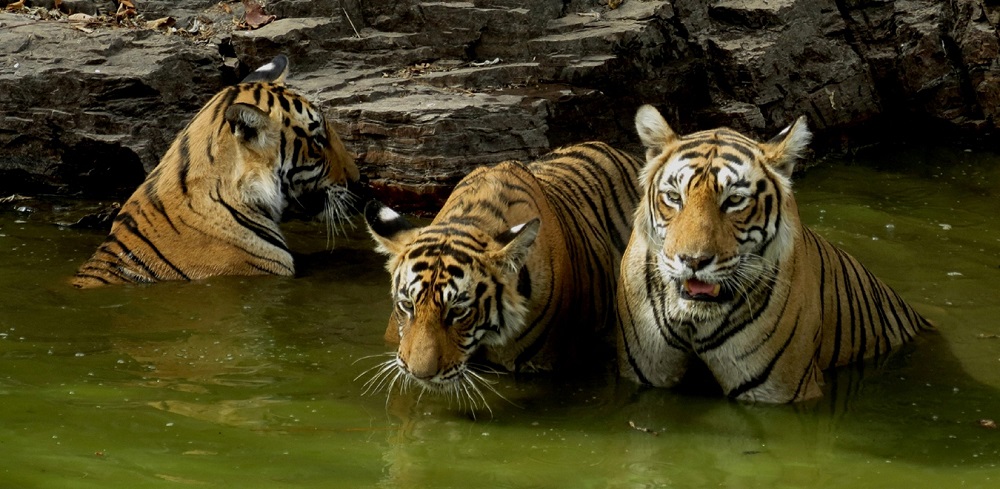The Ranthambore Tiger Reserve located in Sawai Madhopur Rajasthan is one of the most renowned national parks in the world for tiger sightings and wildlife photography. The making of a jungle safari experience in Ranthambore involves several key elements that contribute to its success as a prime destination for wildlife enthusiasts.
Early History and Establishment of Ranthambore Tiger Reserve
The area of Ranthambore has a rich history dating back to the 10th century, with the Ranthambore Fort being a significant landmark. Initially, it served as a hunting ground for the Maharajas of Jaipur. In 1955, Ranthambore was established as the Sawai Madhopur Game Sanctuary. In 1973, it became part of Project Tiger, a major initiative launched by the Government of India to protect tigers. The park was declared a national park in 1980, with subsequent expansions to include Sawai Man Singh Sanctuary and Keladevi Sanctuary.
It’s Natural Surroundings Wildlife Management
Significant efforts have been made to restore and maintain the habitat, including water management, afforestation, and anti-poaching measures. The park authorities use modern technology such as camera traps and GPS tracking to monitor wildlife, especially tigers. Regular census and studies help in understanding animal behavior and population dynamics. Ranthambore Tiger Reserve, renowned for its vibrant wildlife and stunning landscapes, embodies a model of effective wildlife management within its natural surroundings. The management practices here are crucial to maintaining the delicate balance between conservation and tourism. The park’s vegetation primarily consists of dry deciduous forests with prominent tree species like Dhak, Banyan and Neem. The diversity of plant life supports a wide range of herbivores which in turn sustains the park’s predators. Ranthambore is famous for its tiger population. Besides tigers, it is home to leopards, sloth bears, hyenas, jackals and a variety of deer species including sambar and chital. The park also boasts rich avian life with over 300 species of birds making it a birdwatcher’s paradise. Ranthambore Tiger Reserve stands as a beacon of effective wildlife management, showcasing how careful planning and dedicated efforts can preserve natural surroundings and promote biodiversity.
Well-Developed Safari Infrastructure of the Ranthambore Park
The well-developed safari infrastructure of Ranthambore National Park plays a crucial role in providing an enriching experience for visitors while ensuring the conservation of wildlife and natural habitats. The park is divided into several zones (currently 10 zones) to manage tourist flow and minimize human-wildlife conflict. Each zone offers a unique landscape and wildlife viewing opportunities. This zoning helps distribute the pressure of tourism across the park preventing overcrowding in any single area. A limited number of vehicles are allowed in each zone per for Ranthambore Jungle Safari Tour to ensure a minimal impact on the environment and a better wildlife viewing experience. Online booking systems help manage the number of visitors and ensure adherence to these limits. Gypsies are 4WD vehicles that can accommodate up to 6 tourists. They offer a more personalized and flexible safari experience. Canters are larger open-top vehicles that can carry up to 20 tourists. They are suitable for larger groups and offer a cost-effective way to experience the park. The park is gradually adopting eco-friendly practices, including exploring options for electric safari vehicles to reduce the carbon footprint.
The park is well-connected by road and rail with Sawai Madhopur being the nearest town offering various modes of transport to the park. A range of accommodation options from budget lodges to luxury resorts, cater to different preferences and budgets. Many of these establishments are committed to eco-friendly practices.
